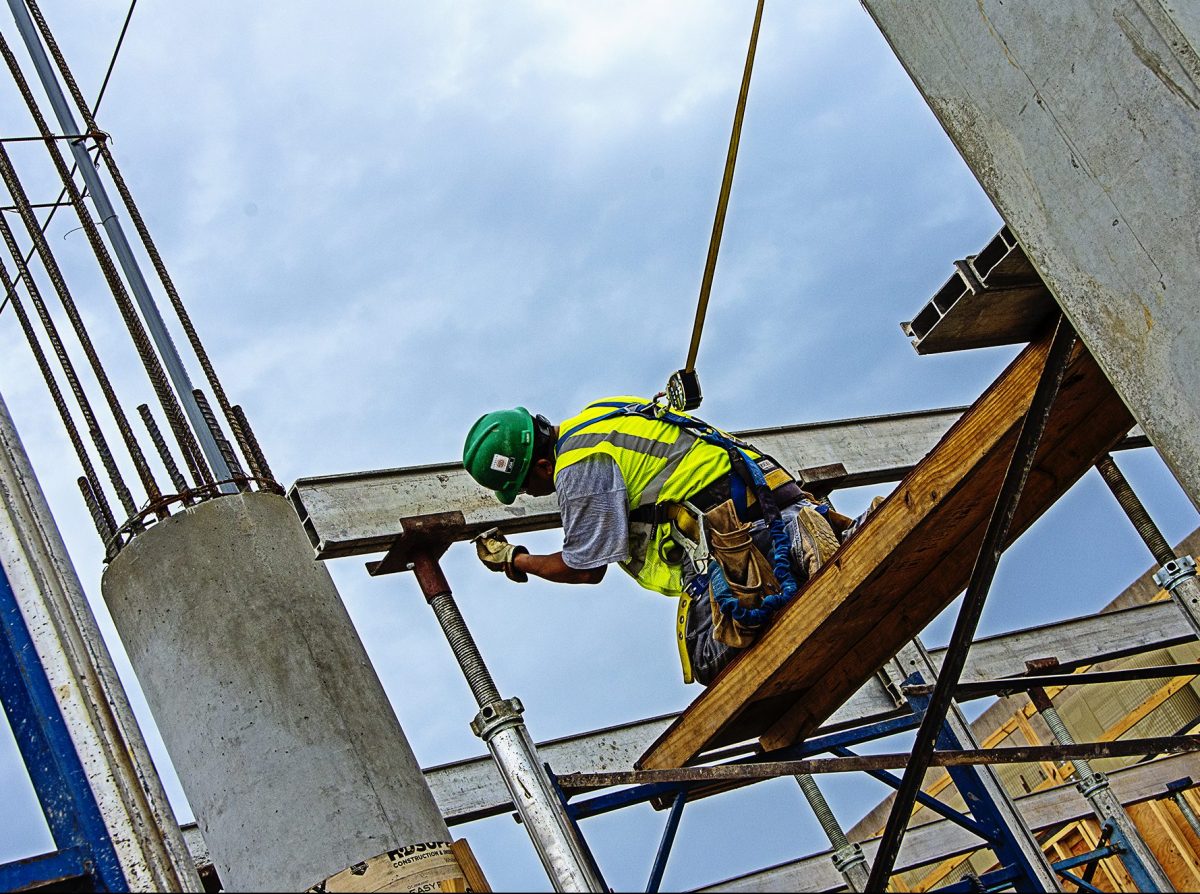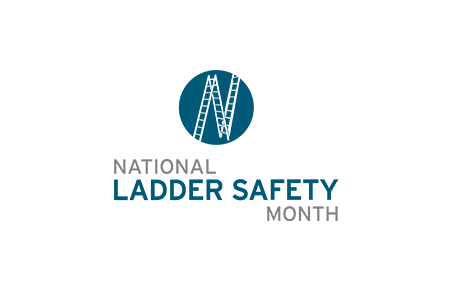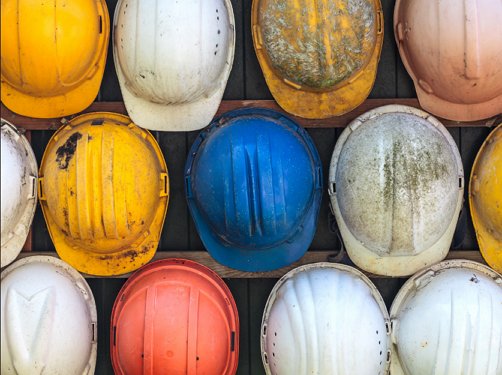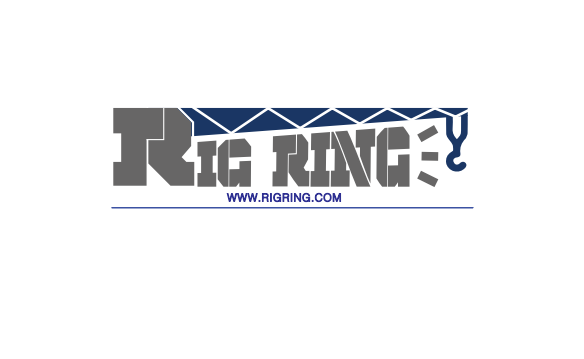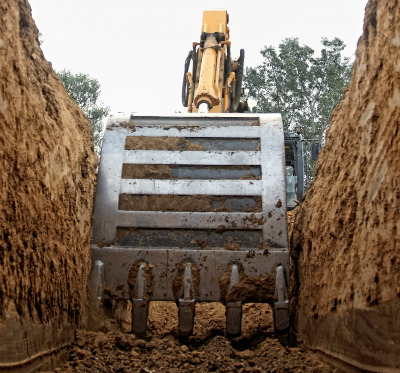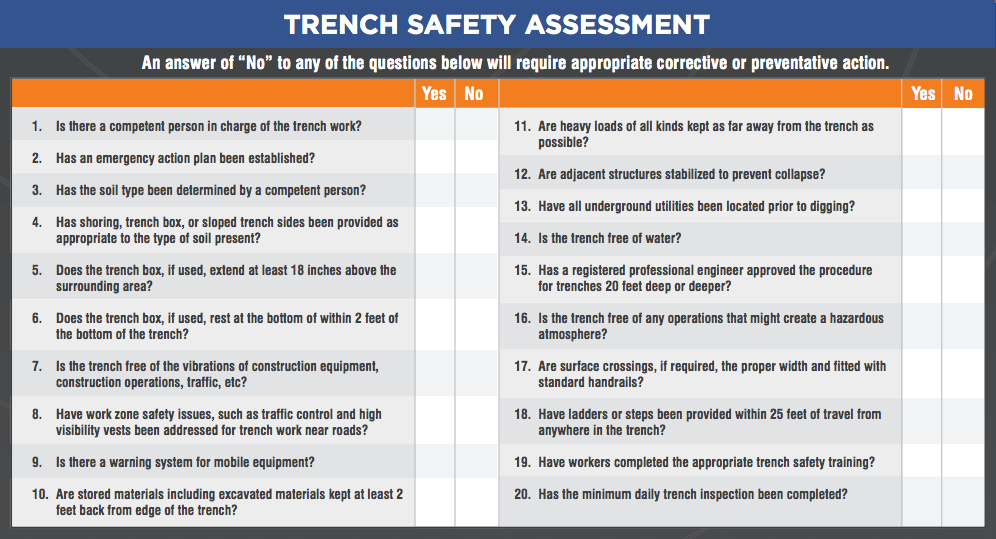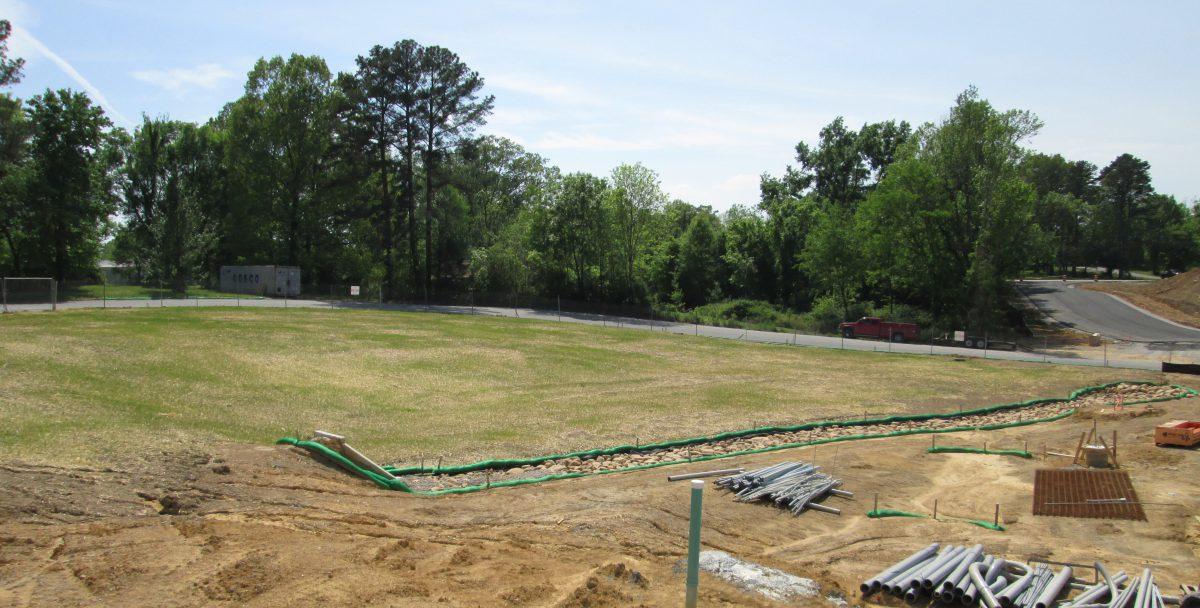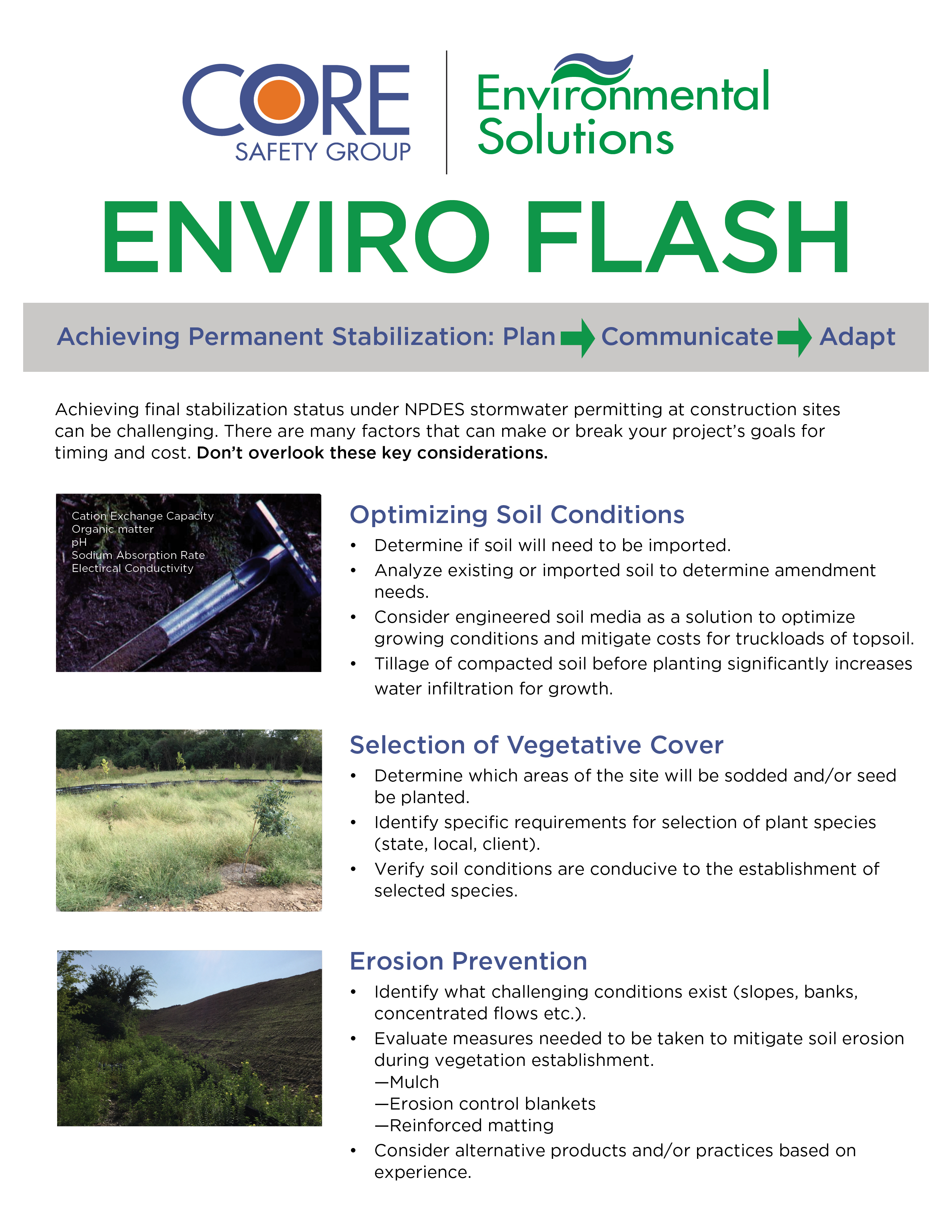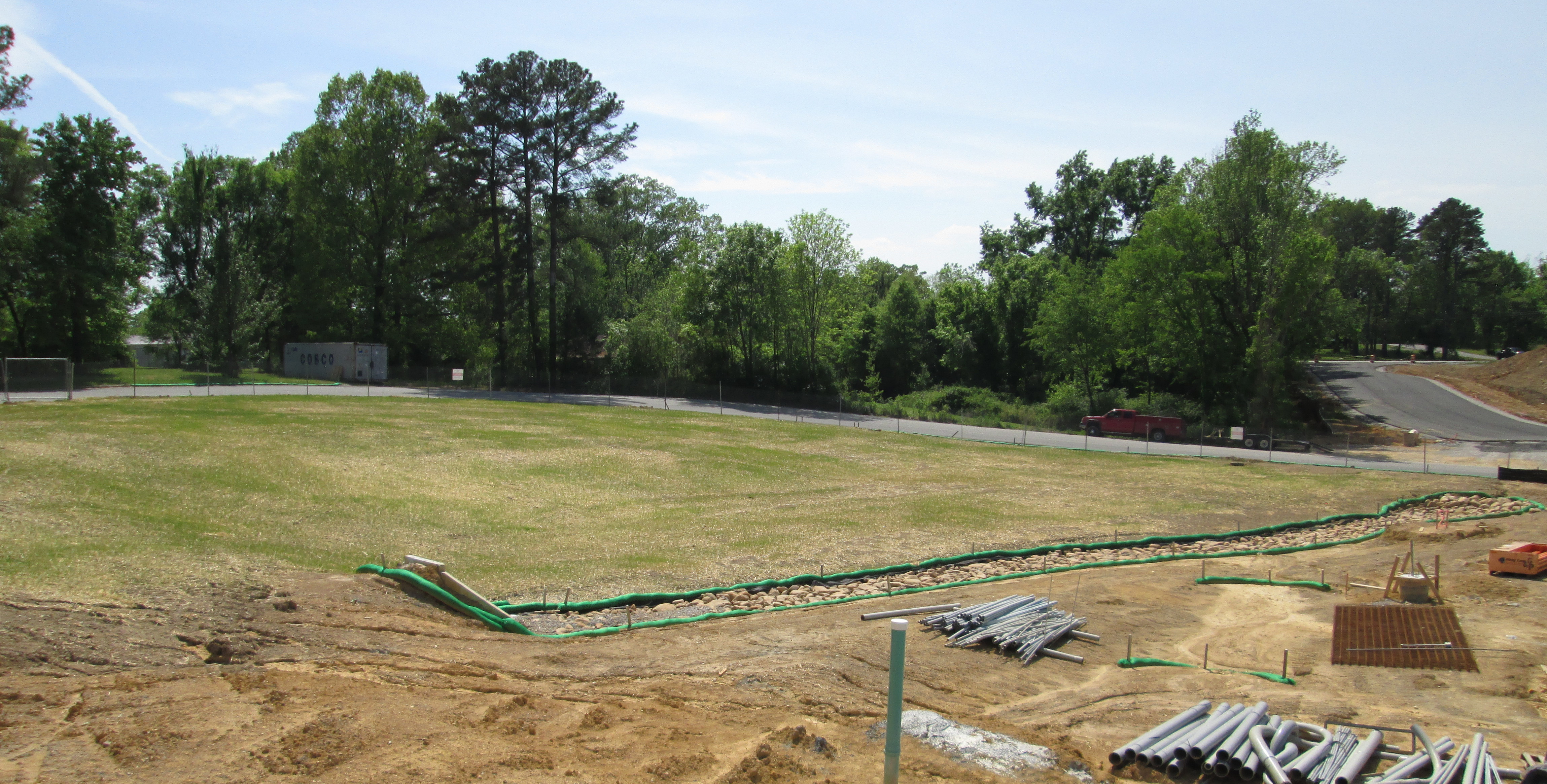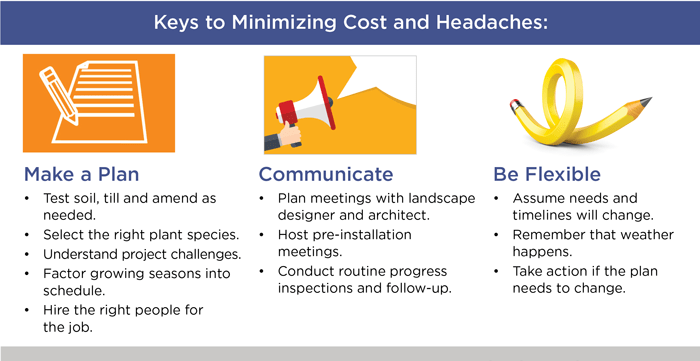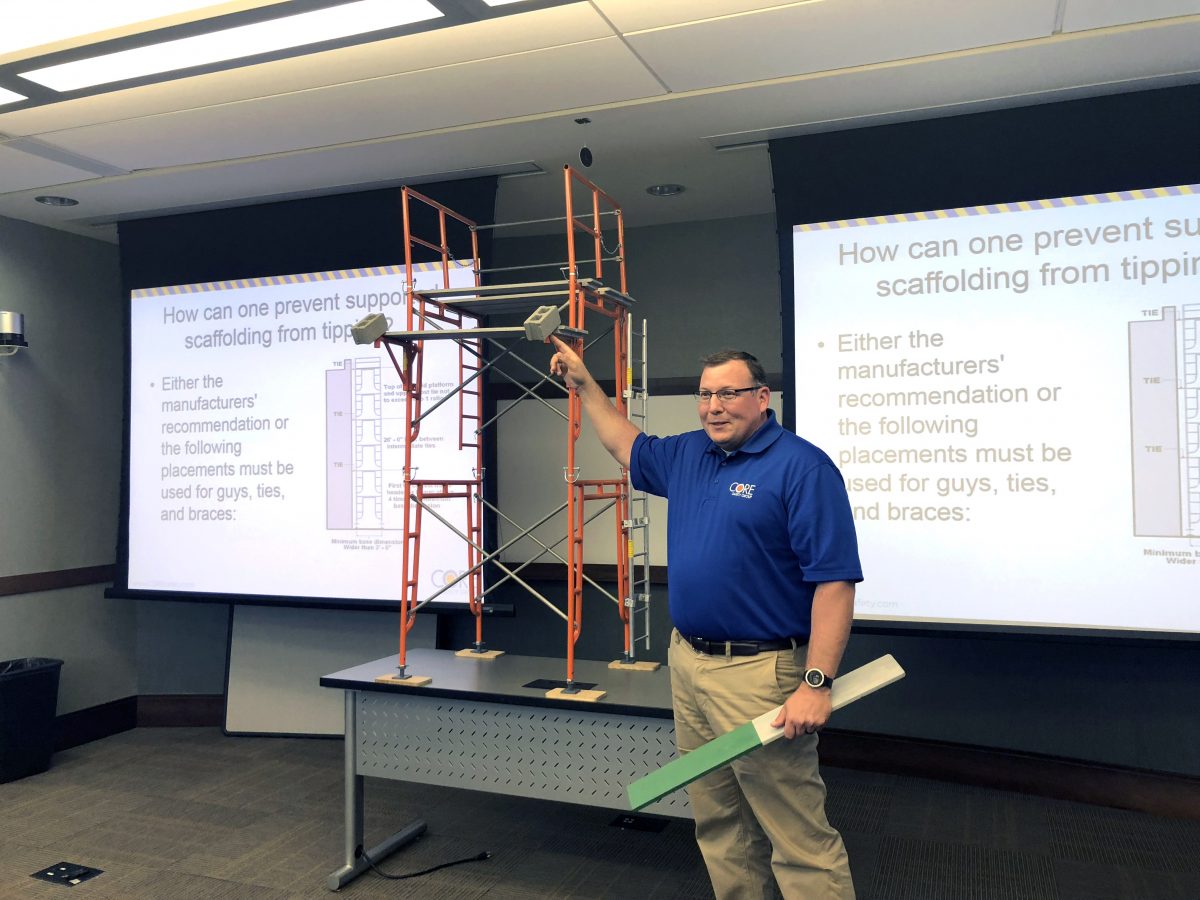
OSHA requires that regular and frequent inspections of job sites, materials and equipment be made by a competent person designated by the employer. These inspections are instrumental in establishing and maintaining a good safety culture. It is also important that these inspections be documented either on paper or using some sort of electronic system. CORE encourages the use of an electronic system which allows the inspection data to be tracked which can help identify areas for improvement on a project site or throughout the company. And really that’s the bigger picture reason of why the regular and frequent inspection are so important. By recognizing the issues we can make policy changes, process improvements or identify training that needs to be provided. These inspections are also important for showing OSHA that as an employer you are doing your due diligence to provide a safe working environment.
If you’re needing help inspecting your job sites, or would like a guiding hand to get things on track, don’t hesitate to call or email Core Safety.

Habits are built in four stages:
- a cue
- a craving
- the response
- the reward.
Knowing how a habit is formed, steps can be taken to create good habits or to break bad ones.
To create a good habit you need to make the cue obvious, make the craving attractive, the response has to be easy and the reward must be satisfying.
On the flip side, to break a bad habit, the cue needs to be invisible, make the craving unattractive, the response should be difficult and the reward has to be unsatisfying.
For example, if we want to ensure that a worker wears a face shield while grinding, make sure that the danger labels on the tool are legible to help make the cue obvious. Also, ensure workers are trained on what injuries look like when face shields aren’t worn, this can make the craving of not being hurt, attractive. Make sure that every grinder always has a face shield paired with it, this will make the response easy to perform. And lastly be sure to positively recognize workers for wearing their PPE, this can be as simple as a thank you that over time could lead to a larger reward.
So whenever you want to influence behaviors, ask yourself.
- How can I make it obvious?
- How can I make it attractive?
- How can I make it easy?
- And how can I make it satisfying?
Click the link below to watch part 2!
If you did not get a chance to watch part 1, Click here!
Excerpt from Atomic Habits

Every year over 100 people die in ladder-related accidents, and thousands suffer disabling injuries. Join the American Ladder Institute (ALI) and participate in the third annual National Ladder Safety Month February 24 – March 31.
This important month was designed to raise awareness of ladder safety and to decrease the number of ladder-related injuries and fatalities.
During the month of March, each week brings a new focus:
- February 24 – March 2: What is Ladder Safety?
- March 3 – 9: Ladder Safety Training and Year Round Partners
- March 10 – 16: Ladder Safety at Work
- March 17 – 23: Ladder Safety at Home
- March 24 – 31: Ladder Inspection and Disposal
Click here to download our free Ladder Safety Poster.
The goals of National Ladder Safety Month are to:
- Increase the number of ladder safety training certificates issued by ALI
- Increase the frequency that ladder safety training modules are viewed on www.laddersafetytraining.org
- Lower the rankings of ladder-related safety citations on OSHA’s yearly “Top 10 Citations List”
- Decrease number of ladder-related injuries and fatalities
- Increase the number of in-person ladder trainings
- Increase the number of companies and individuals that inspect and properly dispose of old, damaged or obsolete ladders
To learn more about National Ladder Safety Month, click here!

First what makes a habit? Habits are built in four stages.
- A Cue
- A Craving
- The Response
- The Reward.
The cue triggers your brain to initiate a behavior. It is a bit of information that predicts a reward. Now this behavior could be safe or unsafe. Let’s taking tie-off for example. The cue is that you’re working at an elevation that you need fall protection.
Cravings are the second step of the habit loop, and they are the motivational force behind every habit. Without some level of motivation or desire we have no reason to act. Sticking with our example of tie-off, the obvious craving is protection if you fall or you could have the craving to get the job done quickly.
The third step is the response. The response is the actual habit you perform, which can take the form of a thought or an action. Whether a response occurs or not depends on how motivated you are and how much friction is associated with the behavior. For example, due to the cue and craving you hopefully will tie off before being in danger. This behavior could be reinforced by a large amount of friction if you do not tie off. Knowing not tying off could result in suspension or termination from your employer, let alone if you fall it could result in serious injury or death. However, if the more powerful craving is to get the job done quickly, you may take a short cut and make the choice not to tie off.
Finally, the response delivers a reward. Rewards are the end goal of every habit. The cue is about noticing the reward. The craving is about wanting the reward. The response is about obtaining the reward. If you choice tie off the reward of protection from a fall and ensuring that you go home is much more valuable that saving marginal time on the task.
To conclude, focus on your cues and cravings and have the discipline to respond the right way.
Click here for fall protection training!

As we all know one of OSHA’s focus four topics is Struck By.
Being struck by falling objects kills hundreds of workers each year and injures tens of thousands more. According to the Bureau of Labor Statistics, 247 deaths were attributed to impacts from dropped tools and other objects in 2015.
Furthermore, according to Liberty Mutual struck by incidents caused 8.6% of the national burden in 2016 resulting in $5.3 billion dollars in direct cost.
Protective equipment, such as hard hats, have long been available with standards written to minimize the effects of struck-by incidents, but this is only addressing this hazard after the object has fallen.
Prevention measures such as netting and toe boards are also put in place to mitigate the risk, however, those practices do not entirely prevent incidents.
While working at heights, active controls utilized to prevent falling tools and objects by tying them off or containing then with tethering systems are a rapidly growing proactive safety practice.
ANSI recently established manufacturing guidelines for tethering systems which was a significant step in reducing dropped tool incidents. Click here to purchase the standard.
While doing work from an elevated position, make sure you evaluate your potential for dropping objects. Identify all those who could be exposed and take necessary precautions to keep everyone safe.
Click here for a list of training that CORE Safety offers.

One of the most common complaints from workers on project sites, regarding hoisting operations, is they can’t hear the signal person’s whistle.
The Rig Ring, by RK Solutions, is an electronic 120DB whistle and blinking light that combines handheld functionality with remote control capability. The Rig Ring is intended to be fixed to an overhead load by the certified rigger or signal person, while the signal person is communicating with the crane operator via radio, the rigger can activate the Rig Ring whistle remotely. This really allows the signal person to be able to concentrate on communication during the lift.
To see the device in action, watch the video below.
For more information on the Rig Ring, head on over to their website!
If you or your company is in the need of awareness training for rigging and signaling give us a call or request a custom quote!
*CORE Safety was not paid for this post and these opinions are our own.

It’s that time of year when staying warm is important, especially if you are working outside for long periods of time. A common question in the construction industry is, what is permitted to be worn underneath a hard hat?
- Winter liners can be worn but should be inspected to ensure they do not adversely affect the proper fit or function of the hard hat.
- Bandannas, skull-caps, hoods, or welder’s caps that do not contain metal parts should be used only if they are worn smoothly on the top of the head.
Care should be taken to avoid pressure points because the suspension should still be adjusted to provide a snug and comfortable fit.
- Baseball-style caps should not be worn; they will interfere with the ability of the suspension to work properly during an impact.
Follow this link to an OSHA standard interpretation that addresses this exact question.
Click here for a list of onsite training that CORE Safety offers for you and your employees.
With fatalities from excavation and trenching doubling in 2016, over the previous five years, OSHA is working to raise awareness and provide safety resources as a top priority in 2018.

Fatalities from excavation and trenching doubled in 2016, over the previous five years. In response, OSHA is working to raise awareness and provide safety resources on the related hazards as a top priority in 2018.
To help spread the word and assist OSHA in reaching its goal to reduce excavation and trenching hazards by 10% in 2018, CORE Safety developed a free printable Trench Safety Poster for posting on job sites. Download it now, and share the following checklist of ways to ensure excavation and trenching safety with your teams.
Trench Safety Best Practices
- A person of authority, who has completed Trenching Safety Training, must be present at all times while trench work is occurring to inspect for existing or potential hazards and ensure prevention or correction of said hazards.
- All workers involved with the trench work must be trained to recognize existing or potential hazards and informed of how to protect themselves from cave-ins.
- Analyze the soil to determine soil type. If you are not sure of soil type, assume it is Type C.
- Slope trench sides appropriate to the type of soil or provide shoring or trench box.
- Locate all underground utilities prior to digging.
- Increase slope of trenches that are exposed to vibrations of construction equipment, construction operations, traffic, etc.
- Keep stored materials at least 2 feet from the edge of the trench.
- Keep excavated material at least 2 feet from the edge of the trench.
- Don’t allow water to accumulate in the trench.
- Professional engineering is required for trenches 20 feet deep or deeper.
- Provide a ladder, steps, or ramp within 25 feet of travel from anywhere in the trench.
- Keep heavy loads of all kinds as far away from the trench as possible.

For more trenching and excavation tips, download our Trench Safety Poster or visit OSHA.gov.
View and download more FREE safety handout and poster downloads.
Achieving final stabilization status at construction sites can be challenging. There are many factors that can make or break your project’s goals for timing and cost. Here are some key considerations courtesy of CORE Safety’s Environmental Compliance Manager, Joe Welch.

The EPA requires “final stabilization” of soil on a construction site under the National Pollutant Discharge Elimination System (NPDES) permit program and defines this as:
- All soil disturbing activities at the [construction] site have been completed and either of the two following criteria are met:
- A uniform (e.g,, evenly distributed, without large bare areas) perennial vegetative cover with a density of 70 percent of the native background vegetative cover for the area has been established on all unpaved areas and areas not covered by permanent structures, or
- Equivalent permanent stabilization measures (such as the use of riprap, gabions, or geotextiles) have been employed.
Achieving final stabilization status at construction sites can be challenging. There are many factors that can make or break your project’s goals for timing and cost. Here are some key considerations courtesy of CORE Safety’s Environmental Compliance Manager, Joe Welch.
Key considerations with soil stabilization:
Optimizing Soil Conditions
- Determine if soil will need to be imported.
- Analyze existing or imported soil to determine amendment needs.
- Consider engineered soil media as a solution to optimize growing conditions and mitigate costs for truckloads of topsoil.
- Tillage of compacted soil before planting significantly increases water infiltration for growth.
Selection of Vegetative Cover
- Determine which areas of the site will be sodded and/or seed be planted.
- Identify specific requirements for selection of plant species (state, local, client).
- Verify soil conditions are conducive to the establishment of selected species.
Erosion Prevention
- Identify what challenging conditions exist (slopes, banks, concentrated flows etc.).
- Evaluate measures needed to be taken to mitigate soil erosion during vegetation establishment.
—Mulch
—Erosion control blankets
—Reinforced matting
- Consider alternative products and/or practices based on experience.

Planting and Installation
- Consider how growing seasons will impact stabilization efforts.
- Adjust the sequencing of activities as needed to achieve stabilization by the target date.
- Ensure the keys to successful planting and/or installation of erosion prevention measures are reflected in planting and installation plans.
- Verify that the contractor selected to carry out stabilization requirements has the necessary knowledge, capabilities and availability to fully execute the plan.
Care and Maintenance
- Verify what level of irrigation is required and how will this be achieved.
- Understand the expected timetable for vegetation growth and establishment.
- Periodically inspect progress towards final stabilization and adjust strategies as needed.
- Understand what “behind schedule” looks like, and what would trigger corrective actions.
- Ensure special instructions from the landscape designer are followed and discuss any changes that need to be made in the design.

For more information or for assistance with soil stabilization on your site, contact us.
While online training is a convenient option, instructor-led safety training offers benefits that will produce a greater long-term payoff, including: Knowledge Retention, Personalized Learning and Peer Learning.

While online training is a convenient option, instructor-led safety training offers benefits that will produce a greater long-term payoff, including:
Knowledge Retention
When it comes to knowledge retention, nothing beats instructor led training. The classroom provides a focused environment for learning that encourages participation and discussion.
Personalized Learning
Experienced instructors can tailor approaches and answer specific questions that come up during the course of the training. Students also receive immediate feedback. If a particular section is confusing, too fast or too slow, the trainer can adjust the teaching plan to accommodate real-time feedback.
Peer Learning
In a classroom setting, attendees can gain insight from others questions and learn from their peers as well as the instructor. This is also a great networking opportunity to meet and learn from others in a similar field or trade.
Learn more about CORE’s instructor-led and onsite safety courses here.


